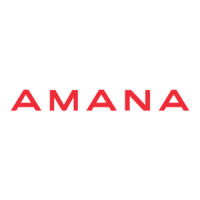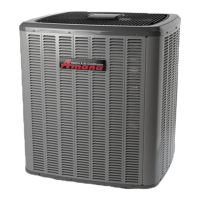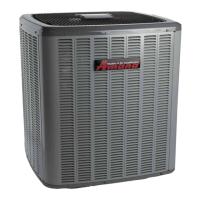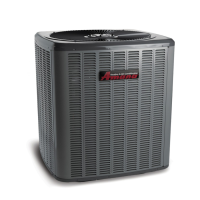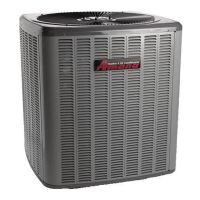SERVICING
14
Voltages between the two data lines and between each
data line and common may be used to determine if the
network is operating properly.
Do the following to measure the voltages on the communi-
cations data lines.
1. With power on to the unit, measure voltage between
terminal “1” and terminal “C” on control board’s
thermostat connector. Voltage should be as noted in the
table below.
2. Measure voltage between terminals “2” and “C”.
3. Measure voltage between terminals “1” and “2”.
4. If voltages are dierent than stated in the table below,
check thermostat wiring for opens/shorts.
5. The network troubleshooting chart provides additional
communications troubleshooting information.
When repairing the refrigeration system:
1. Never open a system that is under vacuum. Air and
moisture will be drawn in.
2. Plug or cap all openings.
3. Remove all burrs and clean the brazing surfaces of the
tubing with sand cloth or paper. Brazing materials do not
ow well on oxidized or oily surfaces.
4. Clean the inside of all new tubing to remove oils and
pipe chips.
5. When brazing, sweep the tubing with dry nitrogen to
prevent the formation of oxides on the inside surfaces.
6. Complete any repair by replacing the liquid line drier in
the system, evacuate and charge.
BRAZING MATERIALS
Torch heat required to braze tubes of
various sizes is proportional to the size of the tube. Tubes
of smaller size require less heat to bring the tube to braz-
ing temperature before adding brazing alloy. Applying too
much heat to any tube can melt the tube. Service personnel
must use the appropriate heat level for the size of the tube
being brazed.
The use of a heat shield when brazing is recom-
mended to avoid burning the serial plate or the nish on the
unit. Heat trap or wet rags should be used to protect heat
sensitive components such as stop valves, EEV, TXV and
lters.
Copper to Copper Joints - Sil-Fos used without ux (alloy
of 15% silver, 80% copper, and 5% phosphorous). Recom-
mended heat 1400°F.
Copper to Steel Joints - Silver Solder used without a ux
(alloy of 30% silver, 38% copper, 32% zinc). Recommend-
ed heat - 1200°F.
Pressure test the system using dry nitrogen and soapy
water to locate leaks. If you wish to use a leak detector,
charge the system to 10 PSIG using the appropriate re-
frigerant then use nitrogen to nish charging the system to
working pressure, then apply the detector to suspect areas.
If leaks are found, repair them. After repair, repeat the pres-
sure test. If no leaks exist, proceed to system evacuation.
Best practices dictate system should be pressure tested
at 450 PSIG with nitrogen for a minimum 4 hours. Follow
the procedure outlined below to test system. If leaks are
found, repair them. After repair, repeat the leak pressure
test described above. If no leaks exist, proceed to system
evacuation and charging.
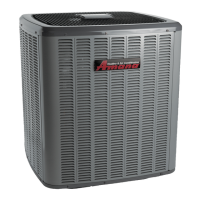
